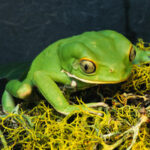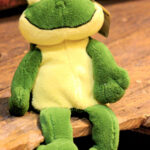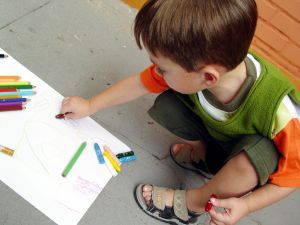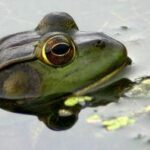Letter F is just full of fun. Friends, family and flowers are sweet, but when it comes to kid appeal, frogs can’t be beat. Frogs are a fun theme for theme teaching through the alphabet. In these lesson plans we’ll explore and practice appropriate concepts and skills for preschool and kindergarten while learning more about frogs along the way.
All good lesson plans begin with great books.
To begin a unit on frogs, stock up on both fiction and non-fiction books about frogs.
For fiction, you won’t want to miss the Froggy series by Jonathon London. Froggy does lots of things that young kids can relate to in Froggy Gets Dressed, Froggy Goes to School, Froggy Plays Soccer, Froggy Bakes a Cake, Froggy Rides a Bike and many more.
Kids love what they can count on in the Froggy series. In every book, one of his parents yells “Froooogggggy!” and Froggy always answers, “Whhhhaaaat?” Froggy also always does some fun things with z letter verbs whether it’s a zip or zap and somewhere in every story Froggy gets embarrassed and “turns more red than green.
Another fun fiction book about frogs comes Diego style in the Ready to Read book Diego Saves the Tree Frogs. This is a rebus style book that even pre-readers can help you “read.” Kids will learn some basic facts about tree frogs in this fun story with Diego.
Don’t forget about the classic Frog and Toad books like Frog and Toad Together and Frog and Toad are Friends. This series by Arnold Lobel also has I Can Read Books.
It’s rhyme time.
While we are focusing on the letter F, we also want to work on other concepts like rhyming. Write “Frog” on a large paper or write and wipe board and challenge young students to come up with rhyming words. You’ll probably get dog or log right away.
Once your young learners have exhausted their own brainstorming ideas for words that rhyme with frog, teach them a helpful trick. Use an alphabet chart and work your way through to find any rhymes they might have missed like fog, hog or log.
Circle time talk: How are we alike and different?
Young learners are all about “me.” Challenge them to tell you how they are alike and different from frogs with a few fun questions.
How many eyes do frogs have?
How many eyes do you have?
How many legs do frogs have?
How many legs do you have?
What do frogs eat?
Do you eat bugs?
Are all frogs alike?
Are all people alike?
Can frogs swim?
Can you swim?
How are some frogs different from each other?
How are some people different from each other?
The more you have read about frogs, the more questions and answers you’ll be able to generate with your young learners.
Get moving with math.
You know young learners need to move and you can include some math in this hopping game. Make sure everyone has plenty of room and put number cards one through twelve in a bag or box. When you draw a number, have them name it and then hop to it.
More thematic lesson plans from this Featured Lifestyle Yahoo! Voices Contributor:
Letter G is for Garden
Letter H is for Horse
Letter I is for Ice Cream
Letter J is for Jack and Jill
Letter K is for Kite




